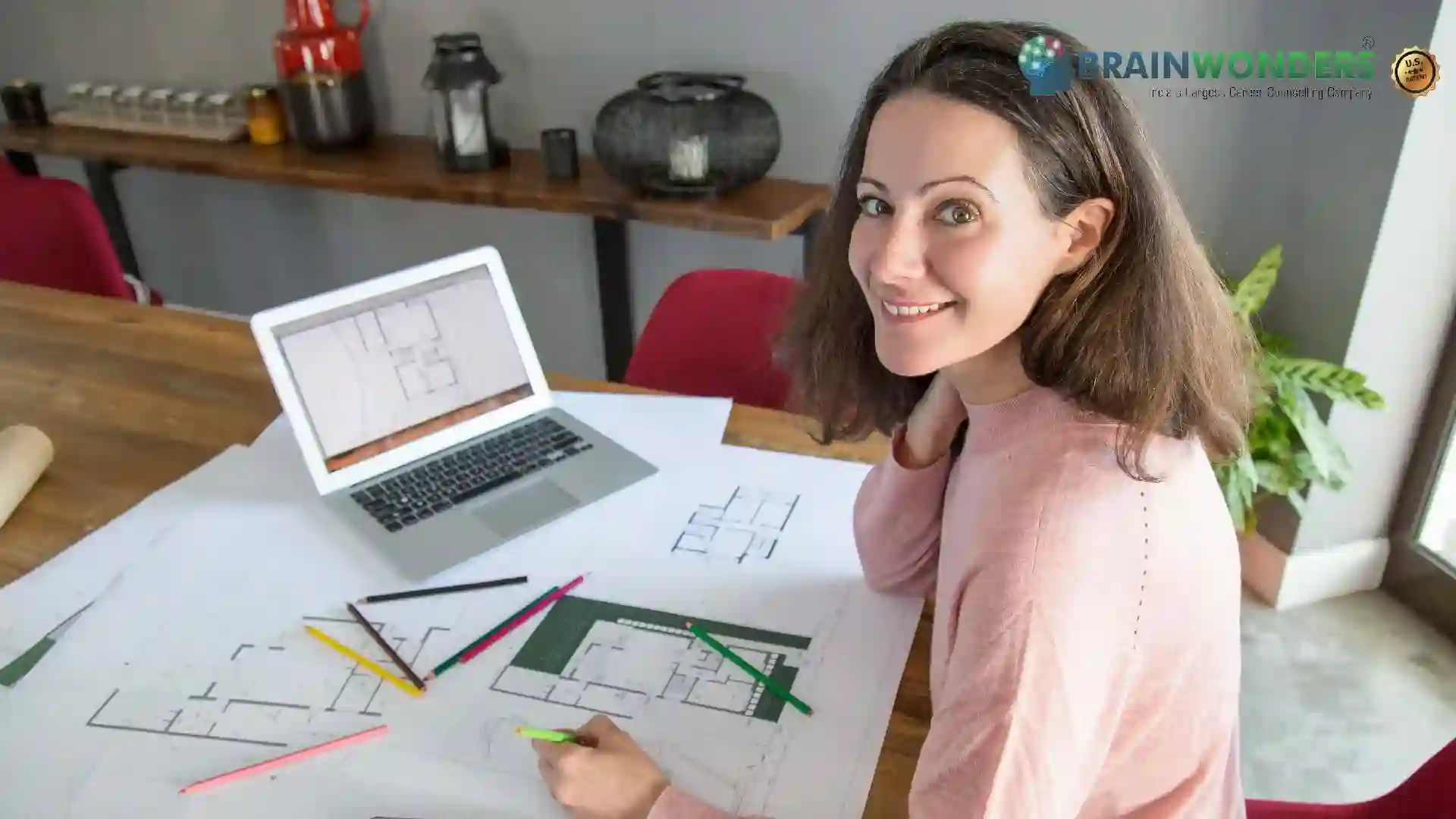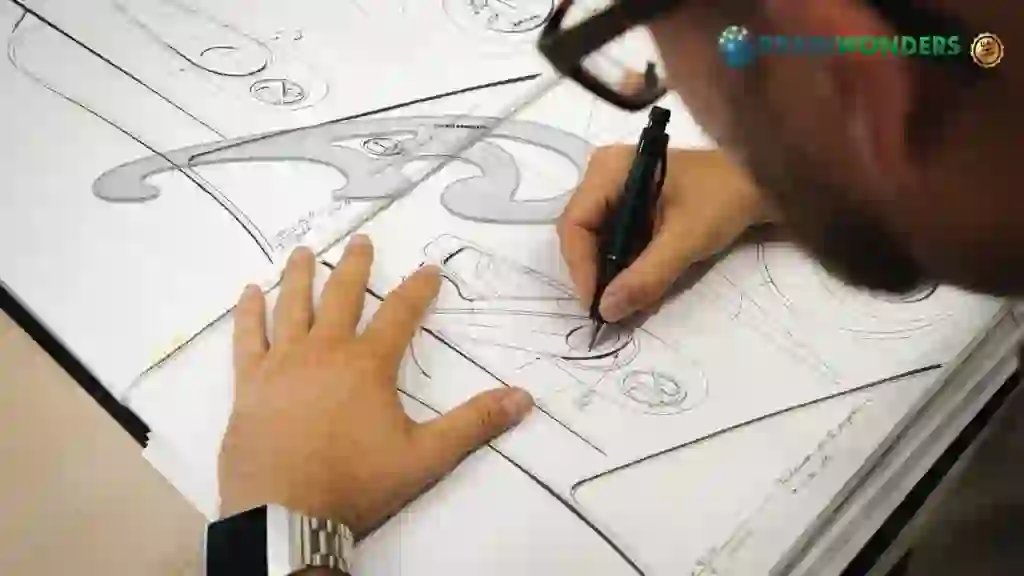How to become a Layout Artist
Overview, Courses, Exam, Colleges, Pathways, Salary

Overview
Who is Layout Artist ?
Layout designers are graphic designers or artists that ensure that text and graphics on printed pages or screens are balanced and legible. To produce a logical flow of information for the reader, layout designers carefully examine composition and page components, such as font sizes, style, and space, as well as picture size and location. Layout Artist, organise things in a pleasing and accessible manner. This is accomplished by changing all elements of a particular layout to determine how each item appears best on its own and how the parts work together as a visual whole. These changes are done using computer code, therefore if you want to be a good Layout Artist, you'll need excellent abilities in graphic software applications like Adobe InDesign and Photoshop.
Typical day at work
What does Layout Artist do?
- Organize Page Components-A layout designer's most important job is to arrange page elements for ads, books, websites, and magazines. Most layout designers work on computers, utilising layout and image editing tools to position page components like photos and text on each page, ensuring that they function together and produce a logical flow of information.
- Text Sizes, Styles, and Fonts—Text sizes, styles, and fonts, as well as text spacing and arrangement—are all choices made by layout designers. This component of the job requires a thorough understanding of typographic principles as well as an understanding of how different fonts might alter a reader's perception of the page. Layout designers often think about how to maintain readability both online and in print.
- Layout designers, in addition to dealing with text, may also change the visuals on a page. Cropping a picture or graphic to enhance the overall appearance and flow of a publication may be as easy as resizing an image. They also take into account compositional rules, making sure that the pictures do not overpower the text or vice versa.
- Examine Page Proofs-Layout designers review page proofs before submitting a project to press to ensure that there are no problems and that the design looks good. While the majority of layout work is done on a computer, designers who deal with printed materials may need to study printed proofs as well. The layout designers then make any necessary adjustments before signing off on the project for printing or online dissemination.
- Layout designers often collaborate with other publishing specialists, such as authors, editors, proofreaders, photographers, and illustrators, to prepare materials for publication. Throughout the publishing process, the layout designer collaborates with many teams, organising layout components and offering overall guidance, as well as making modifications to text and graphics.
Abilities and Aptitude needed
What are the skills, abilities & aptitude needed to become Layout Artist?
- Composition Skills – An eye for composition is one of the key skills in this role, as layout designers need to ensure that page elements are balanced and work with one another to guide the reader
- Typography Skills – This role also requires a strong grasp of typography principles and a keen understanding of how font sizes and styles affect the way readers engage with information
- Drawing Skills – Before creating a layout on a computer, a layout artist frequently needs to draw mockups to show the relative positions of page elements, so some drawing or drafting skills are necessary
- Image and Text Editing – In many cases, layout designers need to edit captions, adjust photos, or alter text, to make these elements fit the page, so they should be able to effectively make changes to page content
- Communication Skills – Because layout designers frequently work with artists and editors, they should be able to effectively communicate ideas, questions, and suggestions
Salary
Salary for Layout Artist?
The salary of a Layout Artist is as follows :
- Minimum Monthly Income: Entry-level Layout Artists in India typically start their careers with a minimum monthly income of approximately INR 15,000 to INR 25,000. These professionals arrange visual elements, graphics, and text to create visually appealing and balanced layouts for various media.
- Maximum Monthly Income: Experienced Layout Artists, particularly those skilled in design software, typography, and visual composition, can earn a maximum monthly income ranging from INR 35,000 to INR 60,000 or more.
- Annual Income: A Layout Artist's annual income varies based on years of experience, proficiency in design tools, and ability to create engaging layouts for diverse projects. Accomplished Layout Artists who consistently produce eye-catching designs, collaborate effectively with clients, and adapt to various design styles may earn an annual income ranging from INR 1,80,000 to INR 7,20,000 or higher.
- Highest Earning Opportunities and Scope: Layout Artists specialising in specific industries such as advertising, publishing, or web design may have opportunities for higher earnings. Additionally, those who excel in creative problem-solving, brand consistency, and staying updated with design trends can enhance their earning potential. The scope for Layout Artists is promising as businesses and organizations rely on skilled designers to visually communicate their messages effectively through various media, including print, digital, and multimedia platforms.
Pathways
How to become an Layout Artist?
Entrance Exam
Entrance Exam for Layout Artist ?
Courses
Which course I can pursue?
Best Colleges
Which are the best colleges to attend to become an Layout Artist?
Industries
Which Industries are open for Layout Artist?
Layout artists are skilled professionals who create visually appealing and organized designs for various forms of media. Their expertise is in high demand across various industries where visual communication is essential. Here are some industries that commonly hire layout artists:
- Graphic Design and Advertising: Graphic design studios, advertising agencies, and marketing firms frequently employ layout artists to create eye-catching designs for advertisements, brochures, banners, and other promotional materials.
- Publishing: Publishing houses, including book and magazine publishers, require layout artists to design book covers, interior layouts, magazine spreads, and other printed materials.
- Web and Digital Media: Web design and development companies need layout artists to create user-friendly and visually appealing website layouts, including user interfaces (UI) and landing pages.
- Print and Packaging: Print shops, packaging companies, and manufacturers hire layout artists to design packaging, labels, product displays, and printed materials.
- Film, TV, and Entertainment: Layout artists contribute to set and prop designs, storyboards, animations, and visual effects in the entertainment industry.
- Multimedia and Animation: Multimedia production companies and animation studios employ layout artists to create visual layouts for animations, videos, and interactive media.
- Fashion and Apparel: Fashion brands and apparel companies utilize layout artists to design lookbooks, catalogues, clothing tags, and promotional materials.
- Interior Design and Architecture: Layout artists work with architects and interior designers to visualize and present architectural plans, interior layouts, and design concepts.
- Education and E-Learning: Educational institutions and e-learning platforms hire layout artists to design educational materials, course content, and digital learning resources.
- Healthcare and Medical: Healthcare organizations require layout artists to create layouts for medical brochures, patient education materials, and healthcare websites.
- Food and Beverage: Restaurants, food companies, and beverage manufacturers use layout artists to design menus, packaging, promotional materials, and signage.
- Cultural and Arts Organizations: Museums, galleries, and cultural institutions hire layout artists for exhibition design, promotional materials, and signage.
- Technology and Software: Tech companies and startups need layout artists to design user interfaces (UI) for software applications, websites, and digital platforms.
- Nonprofit and Social Organizations: Nonprofits use layout artists to create materials for fundraising campaigns, awareness initiatives, and community outreach.
- Event Planning and Marketing: Event planning companies and marketing agencies hire layout artists to design event materials, invitations, banners, and promotional items.
- Automotive and Transportation: Automotive manufacturers and companies utilize layout artists for vehicle graphics, signage, and promotional materials.
- Architecture and Urban Planning: Layout artists contribute to architectural presentations, urban planning designs, and visualization of urban projects.
- Environmental and Sustainability: Layout artists work on materials related to environmental awareness, sustainability campaigns, and green initiatives.
- Corporate Communications: Companies across various industries hire layout artists for internal and external communication materials, presentations, and reports.
internship
Are there internships available for Layout Artist?
Internship opportunities for aspiring layout artists provide valuable hands-on experience in visual design, graphic arts, and layout design. Layout artists are responsible for arranging visual elements, text, and images in a visually appealing and cohesive manner for various types of media. Here are some potential internship options:
- Graphic Design Studios: Interning at graphic design studios allows you to work on client layout projects, learning about design principles, typography, and composition.
- Advertising Agencies: Internships at advertising agencies involve creating layouts for print and digital advertising campaigns and learning about branding and marketing.
- Publishing Houses: Interning with publishing companies allows you to work on book covers, magazine layouts, and other print materials.
- Newspapers and Magazines: Interning with newspapers and magazines allows you to work on layout and design for editorial content, including articles and images.
- Web Design and Development Firms: Interning with web design and development firms involves creating layouts for websites and learning about responsive design.
- Multimedia Production Companies: Internships in multimedia production companies allow you to work on layout and design for videos, animations, and interactive media.
- Film and Television Industry: Interning in film and television involves creating storyboards and visual layouts for scenes and sequences.
- E-commerce and Retail Companies: Interning with e-commerce companies involves creating product layouts for online stores and digital marketing materials.
- Gaming Studios: Internships in gaming studios may involve creating layouts for user interfaces, game levels, and promotional materials.
- Event and Exhibition Design: Interning with event and exhibition design companies allows you to work on layout and design for event signage, displays, and booths.
- Print Shops and Packaging Companies: Internships in print shops and companies involve creating layouts for printed materials and packaging designs.
- Corporate Design Departments: Some corporations have in-house design departments where you can intern and work on layout projects for internal and external communication.
- Nonprofit Organizations: Nonprofits often require layout artists to design materials for campaigns, events, and fundraising efforts.
- Digital Marketing Agencies: Interning with digital marketing agencies involves creating layouts for online ads, social media graphics, and email marketing campaigns.
- Educational Institutions: Interning at schools and universities may involve creating layouts for educational materials, course content, and promotional materials.
- Fashion Industry: Interning with fashion brands may involve creating layouts for lookbooks, catalogues, and promotional materials.
- Architecture and Interior Design Firms: Internships in these fields may involve creating layouts for design presentations and visualizing architectural concepts.
- Cultural and Arts Organizations: Interning with museums, galleries, and cultural institutions involves creating layouts for exhibition materials and promotional collateral.
- Healthcare and Medical Organizations: Some organizations require layout artists to design patient education materials and brochures.
Career outlook
What does the future look like for Layout Artist?
Advertising, marketing, and publishing are just a few of the sectors where layout designers might work. They may collaborate with authors, editors, photographers, and graphic designers in any industry to make adjustments to page components and maintain a consistent and appealing design. Full-time designers are usually employed by an agency, although freelance and part-time designers may work from home. The timetables of layout designers might change based on workloads and deadlines. Self-employed people may need to change their work schedule to meet with customers in the evenings or on weekends. They may also spend a portion of their time seeking new projects or competing for contracts with other designers.



